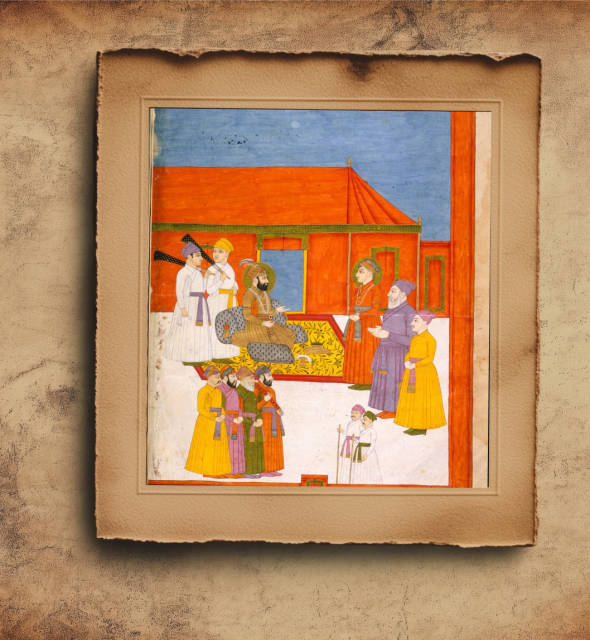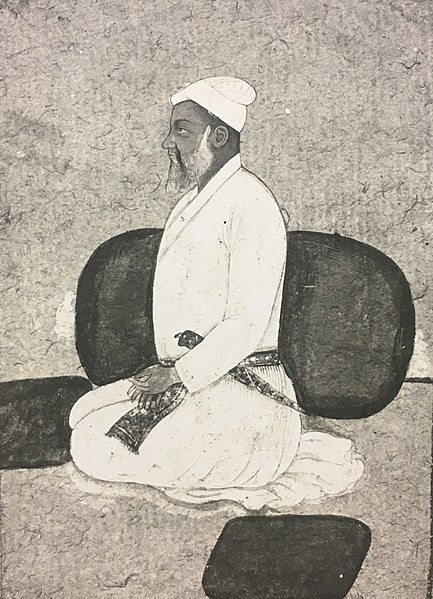
ABD USSAMAD KHAN (d. 1737), governor of Lahore from 1713 to 1726, a descendant of the Naqashbandi saint `Abdulla Ahrar, a great grandson of Khwaja Baki of Baghdad, was born at Agra when his father, Khwaja `Abd ul-Karim Ansari, had come out with his family from Samarkand on a tour of India during the reign of Emperor Aurangzib. When Samad Khan was two years old, his parents returned to Samarkand where he passed the early years of his life and where he attained the office of Shaikh ul Islam. Soon thereafter he came to India obtaining appointment at the court of Aurangzeb. He served for many years in the Deccan without attracting much notice.
CHARHAT SINGH (d. 1770), grandfather of Maharaja Ranjit Singh, was the eldest of the four sons of Sardar Naudh Singh. He took to arms while still very young and started taking part in the raids and expeditions led by his father. He also fought in the Sikhs` skirmishes with the Afghan invader Ahmad Shah Durrani. After the death of his father, he broke away from the Faizullapuria Misi and determined to acquire territory for himself. He left his ancestral village of Sukkarchakk and established his headquarters at Gujranwala, where he had gathered a considerable following within a short time.
FATEH SINGH KALIANVALA (d. 1807), military commander and jagirdar under Maharaja Ranjit Singh, was the son of Jassa Singh and grandson of Jaimal Singh. Jaimal Singh was a Sandhu Jatt and the first in the line to embrace the Sikh faith. He was a resident of Kala village in Amritsar district. In the troops of the Sukkarchakkia chiefs, Charhat Singh and Mahan Singh, he had fought against the Chatthas inhabiting the northern part of Gujranwala district. In one of the skirmishes with the Chatthas he lost both of his sons, Jai Singh and Jassa Singh. Fateh Singh entered the service of Maharaja Ranjit Singh in 1797, and rapidly rose in the favour of his master.

ADINA BEG KHAN (d. 1758), governor of the Punjab for a few months in AD 1758, was, according to Ahwal-i-Dina Beg Khan, an unpublished Persian manuscript, the son of Channu, of the Arain agriculturalist caste, mostly settled in Doaba region of the Punjab. He was born at the village of Sharakpur, near Lahore, now in Sheikhupura district of Pakistan. Adina Beg was brought up in Mughal homes, for the most part in Jalalabad, Khanpur and Bajvara in the Jalandhar Doab. Starting his career as a soldier, he rose to be collector of revenue of the village of Kang in the Lohian area, near Sultanpur Lodhi.
BAGHAR SINGH, BHAI, killed in 1740, was the youngest son of Bhai Alam Singh Nachna, of Duburji village in Sialkot district, a warrior in Guru Gobind Singh\'s retinue at Anandpur. His elder brothers, Mohar Singh and Amolak Singh, too, were soldiers and are believed to have died fighting along with their father in the battle of Chamkaur on 7 December 1705. As he grew up, Baghar Singh also joined the ranks of the Khalsa.









